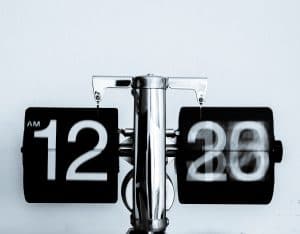What is pre-pro sampling?
The Pre-Production Sample (PPS) or Pre-Pro is a sample of the products that occur before manufacturing starts.
The Pre pro sample helps buyers look over the design, including stitching, labelling, or any other manufacturing processes that need to be confirmed before large-scale production begins.
Pre-production samples allow both the manufacturer and the buyer to be entirely in agreement about the construction of the product. Once the PPS sample has been approved, the garment or product can then move into manufacturing for the entire order.
After the Pre-Production Sampling stage, there will often be a TOP sampling stage that occurs in order to make sure the production line products match with the pre-pro sample.
Pre-pro sampling can still be adjusted if the buyer still believes there are updates that need to occur, however, depending on the supplier agreement, additional costs may or may not be incurred for changes to designs and production at this stage.
Any additional costs may well be worth it in order to ensure the two parties are in agreement about the outcome of the product.
Why is a pre-production sample important?
Pre-production samples ensure that the final product is consistent with the quality and standards of the original product conceived during the product development process. It enables the company requesting for a pp sample a way of evaluating the clothing factory’s capability to meet the pre-agreed quality requirements of the product.
Pre-production samples must be evaluated and approved prior to bulk production. The primary purpose of the pre-production process is the early identification of any problems during actual production and make the necessary corrections. Samples also enable the contracting company to determine the actual cost of production and production time.
Clothing Company and Pre-production Sample Maker Agreements
The process of pre-production usually takes several samples runs before a perfect product is achieved. It is seldom, if not impossible, to create the perfect product during the first attempt. Several factors come into play, such as the complexity of the design, fabrics used, trimmings, and fabrication equipment required to produce the final product.
Multiple revisions can be costly for the pp sample factory. It can also translate to long delays for the contracting party in terms of them being able to market their product. To avoid this situation, both parties create a contract to protect their interest. Items in the contract often include:
- The number of revisions or corrections before a supplier can charge the buyer.
- Exceptions when the sample maker can charge the buyer – any changes to the pre-agreed design, materials, trimmings, delivery dates
- Setting a delivery date for the first and succeeding samples, timeframe before the buyer can ask a refund or terminate the agreement.
- The number of samples that a supplier can make before an acceptable sample is produced. After which a buyer may terminate the agreement or ask for a refund
Examples of PPS in the clothing/garment industry
Creating the final product requires the creation of several samples from pre-production to the top production sample. The types of samples may vary according to the requirements of the clothing contractor or buyer. Below is a list of the different kinds of samples commonly used in the clothing industry.
1. Pre-production Sample
A pre-production sample in the garment industry is a critical step before bulk production. Whether done in-house or outsourced to a contractor, the purpose of pps production is to prove the pattern, estimate production costs, and ensure consistency in production.
PP samples are made using all the necessary materials (fabric, trims, and accessories) required to produce the actual final product. Ideally, samples must be made in the production line to produce accurate results and verify if the facility can handle actual production.
If the sample is approved, this becomes the production sample. The pre-production samples can also be used as ‘Salesman’s Samples’ for pre-selling, marketing purposes.
2. Production Sample
Once the pre-production sample is approved, this is then considered as a production sample. It then goes into a limited production run and gauged for quality. Production can also be limited to a single size and colourway.
During this stage, a size run sample can also be performed. The factory performs a sampling run to verify that final products conform to size standards and check that no mistakes were overlooked.
3. Top Production Sample
After a limited run of the approved pre-production sample or the production sample, random finished products are taken and inspected from the first production run. This sample is referred to as the top production sample. Again, this can also be used to ensure the quality of products.
The Top Production sample signals the formal start of production. If outsourced, the Quality Control inspector of the company who owns the brand visits the production line and randomly picks a garment for evaluation. The process is similar for garments made in-house. The samples are inspected and checked if these are consistent with pre-agreed specifications.
4. Sales Sample
The sales sample is the actual product to be marketed. As the name implies, the sale sample is used for marketing and presentation to potential buyers.
During this stage of the marketing cycle, the sale sample allows you to experiment with different trims and fabric combinations. After proving proof of concept, vendors can then make subtle changes to colourways, fabric combinations, and trims to determine the marketability of the product.
However, it is essential to remember that any changes to the design should not affect the actual production process. Changes should be subtle or cosmetic such as changing colourways or using a different fabric as this can disrupt the production line.
How is PPS different from other types of samples?
Samples are used by clothing companies and manufacturers to give them an insight into the costs of production, the complexity of production, and production time for the finished product.
A pre-production sample can be done in-house or outsourced to a clothing factory. Creating a sample is no simple task. It requires several individuals to work as a team. This process can include people in sourcing and purchasing raw materials, production team, costing, and quality control that oversees the final product.
Sampling plays a critical role in determining if a product goes into final production. The result can affect management’s decision in terms of final pricing, production time, and overall marketability. For clothing manufacturers, the decision to proceed with bulk production depends on their ability to produce a sample that meets all the buyer’s requirements.
Things to consider once you have a PPS
After finalising the pre-production sample and with all parties satisfied with the product, the next step is to create a ‘Size Set.’ This process involves the production team creating product samples of different sizes. During this stage, it is only a case verifying that the production team can create the garment in different sizes while ensuring the quality of the final product.
If all goes well, a purchase order is placed with the clothing manufacturer for bulk production. The contract binds you and the factory. It stipulates what is expected from each party. Contracts must be incredibly detailed and include items such as trims, delivery dates, fabrics, prices to ensure that each party fulfills their obligations accordingly.
Remember that all contracts are legally binding, and a useful tool for protecting your interest if done correctly. But before signing any document, you should be sure that all samples meet all your requirements; labels, size sets, tags, packaging, and everything.
Selecting the right pre-production sample factory
If you are planning to outsource your production, then selecting the right clothing factory is critical to the success of your business. A small factory that is only able to produce a limited number of garments may not be the best choice for mass production. It can be a significant cause of delivery delays, even if they can make excellent pre-production samples.
Lots of planning should be done when selecting the right pre-production factory. You must first be clear with your requirements and expectations and give yourself enough time to visit factories. Remember that pre-production samples are an essential step between designing a product and getting it into production. Samples could ultimately determine whether a clothing line ultimately goes into full production or not.




